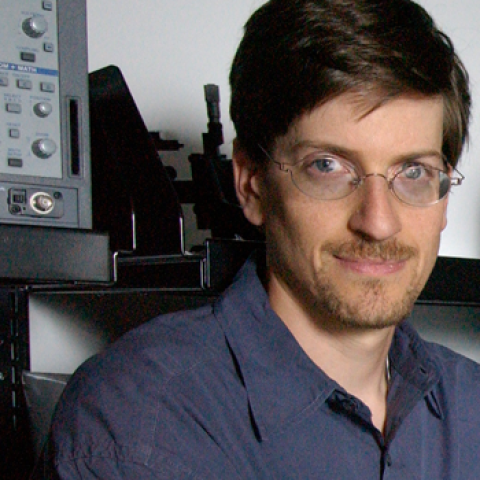NeuroVentures Funded Grant
Mark Schnitzer, Biology
Michael Lin, Pediatrics
Neuroscientists have acquired substantial knowledge about the microscopic elements of the brain, such as proteins and cells, and about the macroscopic patterns of brain area activation in a wide variety of perceptual, cognitive, and motor tasks. Yet we scarcely understand how the former elements produce the latter set of brain responses, because we are missing crucial information about what happens in the brain at intermediate (or ‘mesoscopic’) scales. The reason for this knowledge gap is the absence of a technology that can visualize the spiking activity patterns of tens to hundreds of thousands of neurons in networks that extend across brain volumes intermediate in size between those typically studied by microscopy and by MRI. Here we propose to create such a technology. Optical imaging is well suited for observing specific aspects of cellular dynamics. Ultrasound imaging provides 3D, tomographic image data over centimeter-scale volumes.
To create hybrid strategies for visualizing individual neurons’ dynamics across massive neuronal ensembles, we will develop sensor proteins that can report a neuron’s level of activation via a modulation in the sensor’s ability to absorb light. Complementary to this aim, we will design and build high-speed instrumentation for brain imaging by combining cutting-edge optical methods for shaping pulses of laser light that will yield thermally induced sound waves. If we succeed, neuroscientists stand to gain a tomographic imaging method capable of providing entirely new glimpses of concerted neural dynamics and information flow across multiple regions of the mammalian brain.



